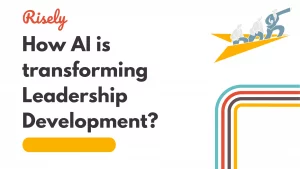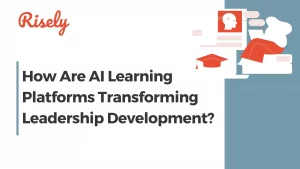Knowledge transfer is essential to ensure organizational success in today’s fast-paced business environment. Effective knowledge transfer can improve performance, reduce risk, and increase innovation. But what exactly is knowledge transfer, and how can you ensure it is successful in your workplace?
This blog post will explore the five key elements of successful knowledge transfer programs, including why documenting knowledge is crucial. We will also provide tips on developing a knowledge transfer strategy and effective ways to share knowledge within your organization. Additionally, we will discuss common impediments to successful knowledge transfer and how to overcome them. Finally, we will look at the future of knowledge transfer in the workplace and how remote work impacts it. Join us as we delve into the world of knowledge transfer and learn how you can ensure its success in your organization.
What is Knowledge Transfer?
Knowledge transfer refers to sharing knowledge, skills, and expertise between individuals through various methods like formal training, job shadowing, and mentorship. Successful knowledge transfer programs involve capturing different types of knowledge from team members, including implicit and explicit information. It enhances organizational efficiency and productivity. Continuous knowledge transfer ensures that information is current and valuable.Examples of Successful Knowledge Transfer Programs
Successful knowledge transfer programs can take many forms, such as:- Mentorship Programs: Implementing mentorship programs where experienced employees share their knowledge, skills, and expertise with junior colleagues through regular meetings, coaching sessions, and guidance.
- Documentation and Knowledge Repositories: Creating comprehensive documentation, manuals, and knowledge repositories that capture and organize critical information, processes, and best practices for easy access and reference by employees.
- Cross-Training: Encouraging employees to participate in cross-training opportunities, allowing them to learn and master skills from different departments or teams, fostering a more well-rounded workforce.
Why Documenting Knowledge is Important?
Sharing critical information with the right people at the right time is crucial in successful knowledge transfer. Documenting knowledge through a well-designed knowledge transfer plan can help with this process. For example, it can involve training programs for new hires and employees or using work shadowing and mentoring to aid in acquiring tacit knowledge. Effective documentation methods include creating templates or using a Knowledge Management System (KMS) that enables access to critical information and metrics. Finally, building a company culture that encourages collaboration and problem-solving is essential to foster innovation. In totality, knowledge transfer enables continuous efforts in a single direction.Other Interesting Reads
The Benefits of Successful Knowledge Transfer
Improved Performance
Effective Knowledge Transfer is not just about sharing information; it’s about improving employee performance. By transferring explicit knowledge, such as best practices or critical knowledge at the right time to the right people, companies can ensure better decision-making and problem-solving capabilities among employees. Work shadowing, mentorship programs, or simulations can help transfer tacit knowledge from SMEs to new hires. Remember that successful Knowledge Transfer promotes a culture of continuous learning and development within an organization leading to improved productivity, reduced risk of knowledge loss due to employee turnover or retirement, and innovation by building upon existing ideas.Reduced Risk
Successful knowledge transfer is crucial for any organization to avoid unwanted knowledge loss. Knowledge transfer activities can include sharing best practices through work shadowing, mentorship, or formal training programs. These activities safeguard the new cohort of team members from getting caught up in challenges that the team has already worked on earlier. It also helps define novel strategies based on insights and learning, reducing the team’s risk. The importance of transferring different kinds of knowledge should not be underestimated in building a solid company culture that encourages problem-solving and promotes new ideas among team members.Increased Innovation
Sharing knowledge and expertise among team members is crucial to achieving increased innovation. It enables them to build on each other’s ideas and generate new solutions to problems. It promotes creativity and prevents redundancy in work processes. Effective knowledge transfer involves sharing explicit and tacit knowledge by documenting best practices through templates, mentorship, work shadowing, simulation, formal training, etc. Successful implementation of a knowledge transfer strategy can prevent the loss of critical information and enable teams to add more to their knowledge base.How to Develop a Knowledge Transfer Strategy?
Identify Key Knowledge Holders
To ensure successful knowledge transfer, it is crucial to identify key knowledge holders possessing explicit and tacit knowledge. Interviews, surveys, and observations are some of the best ways to identify them. In addition, developing a comprehensive knowledge management system with a template for sharing best practices can help in the documentation and mentorship of new hires. Moreover, encouraging effective knowledge sharing among team members through formal training programs such as work shadowing and simulation activities can help tackle impediments like poor communication and lack of motivation to share information.Motivate Knowledge Sharing
Encouraging the workforce to share important information is crucial for successful knowledge transfer. Recognition and rewards, creating a culture of collaboration, providing training and development opportunities, regular communication, and feedback can motivate the team members to proactively share explicit and tacit knowledge. In addition, managers should continuously evaluate the knowledge transfer plan using metrics that track knowledge transfer from subject matter experts to new hires or other team members.Choose a Documentation Method
Documentation is an essential part of any successful knowledge transfer plan. Several factors must be considered when choosing a documentation method for effective knowledge transfer. The nature of knowledge being transferred and employee preferences should be considered while selecting a suitable template. Furthermore, ensuring that documentation is easily accessible and understandable by all team members involved in the knowledge transfer process is critical. Finally, regular documentation review and updating are crucial for ensuring explicit knowledge retention within the workforce.Select a Platform for Sharing Knowledge
Choosing the perfect platform for sharing different types of explicit and implicit knowledge among your workforce is critical to ensure successful knowledge transfer. Employee preferences should be considered when selecting from internal wikis, social media platforms, or specialized software. In addition, the preferred platform must align with your organizational culture and goals without compromising security measures. Finally, periodic evaluations of chosen platforms will help identify areas for improvement in achieving effective knowledge transfer.Measure and Evaluate Results
To ensure that your knowledge transfer strategy works well, you must establish specific goals and success metrics beforehand. Then, keep track of the progress regularly and assess the effectiveness of the knowledge transfer process. Use employee feedback to identify gaps and refine the strategy accordingly. Monitoring and evaluating results regularly will help sustain successful knowledge sharing across the workforce.Tips for Effective Knowledge Sharing in the Workplace
Communicate the Importance of Sharing Knowledge
Encouraging a continuous learning and development culture is critical for successful knowledge transfer in the workplace. Leaders must communicate the importance of sharing knowledge by providing formal training and support for employees to learn new skills and improve existing ones.Make Sharing Knowledge Easy and Accessible
Creating a user-friendly centralized knowledge management system is essential for effective knowledge transfer. Encouraging employees to contribute by providing training and resources can be very helpful. In addition, collaboration and teamwork can be fostered by using tools like wikis, forums, and internal social networks. This environment helps cultivate a culture of sharing, leading to successful knowledge transfer.Encourage Collaboration
Fostering a culture of sharing in the workplace is essential for successful knowledge transfer. One way to achieve this is by encouraging collaboration among team members. By working together and communicating openly, employees can share their tacit knowledge and develop new problem-solving ideas. Managers can facilitate this process by providing collaboration tools like online platforms or whiteboards that make sharing easy and accessible. Moreover, celebrating successful collaborations reinforces teamwork and knowledge sharing as an essential part of team culture.Impediments to Successful Knowledge Transfer and How to Overcome Them
To ensure a successful transfer of knowledge at work, it’s crucial to overcome any potential impediments that may arise. These can include:Resistance to Change
Overcoming resistance is crucial for ensuring successful knowledge transfer. A continuous learning and development culture can encourage employees to share their tacit knowledge with others. Providing knowledge-sharing incentives can drive the workforce to develop a sound knowledge transfer plan using simulation or work shadowing. Effective communication and transparency amongst team members are also essential in reducing resistance to change.Lack of Motivation to Share Knowledge
Motivating employees to share their expertise is crucial for the success of a knowledge transfer plan. Unfortunately, it’s common for team members to hesitate when sharing tacit knowledge due to fear of job loss or time constraints. However, the workforce will be more inclined to participate in activities like work shadowing and mentorship by instilling a team culture of explicit and implicit knowledge sharing and rewarding contributors with incentives like bonuses or promotions. In addition, formal training and adequate resources will help build employee confidence when documenting critical information via a knowledge management system. Read more here: How Company Culture Shapes Employee Motivation? A Manager’s GuidePoor Communication and Collaboration
Effective communication and collaboration are crucial to ensure successful knowledge transfer at work. Misunderstandings, incomplete information, and wasted time can arise due to poor communication. Therefore, it is necessary to use collaboration tools such as video conferencing, chat platforms, and project management software to enhance communication. Regular team meetings and check-ins help maintain a common understanding.The Future of Knowledge Transfer in the Workplace
Effective knowledge sharing is crucial to ensure the continuity of team operations. To achieve successful knowledge transfer, companies should prioritize knowledge management and develop a solid strategy or template for transferring knowledge among team members.The Impact of Remote Work on Knowledge Transfer
Remote work has become increasingly common, posing challenges for effectively sharing information, experience, or skills – collectively known as knowledge transfer. However, companies can bridge this gap by using communication and collaboration tools such as video conferencing, chat platforms, and project management software. To ensure seamless knowledge transfer, it’s essential to establish clear guidelines for remote workers while investing in training programs that prepare all employees to share tacit and explicit knowledge effectively. Regular check-ins facilitate monitoring progress towards these goals while maintaining a culture of open communication within the workforce.The Need for Continuous Learning and Development
To ensure successful knowledge transfer in the workplace, companies should prioritize creating a knowledge transfer plan that includes mentorship, work shadowing, documentation templates, formal training programs for new hires and employees, simulation exercises for problem-solving scenarios, and other practical knowledge-sharing activities. A robust knowledge management system is also crucial to capture knowledge from subject matter experts at the right time.Conclusion
In conclusion, successful knowledge transfer is a critical element in ensuring the long-term success of any organization. Documenting and sharing knowledge can improve performance, reduce risk, and increase innovation. Developing a knowledge transfer strategy that identifies crucial knowledge holders, motivates knowledge sharing, and selects a platform for sharing knowledge can help organizations overcome impediments to successful knowledge transfer. Encouraging collaboration and communication in the workplace can also facilitate effective knowledge sharing. As we move towards a more remote work environment, it’s essential to prioritize continuous learning and development to ensure successful knowledge transfer in the future.FAQs on Knowledge Transfer at Work
What are the three types of knowledge transfer?
The three types of knowledge transfer are:
a) Explicit Knowledge Transfer: This involves the transfer of knowledge that can be easily articulated, documented, and shared, such as manuals, procedures, or formal training programs.
b) Tacit Knowledge Transfer: Tacit knowledge refers to knowledge that is difficult to articulate or codify, often rooted in personal experiences, intuition, or expertise. It is typically transferred through direct interaction, observation, mentoring, or on-the-job experiences.
c) Cultural Knowledge Transfer: Cultural knowledge encompasses the unwritten norms, values, and beliefs that shape an organization’s work environment. It is transferred through socialization, shared experiences, and informal interactions.
a) Explicit Knowledge Transfer: This involves the transfer of knowledge that can be easily articulated, documented, and shared, such as manuals, procedures, or formal training programs.
b) Tacit Knowledge Transfer: Tacit knowledge refers to knowledge that is difficult to articulate or codify, often rooted in personal experiences, intuition, or expertise. It is typically transferred through direct interaction, observation, mentoring, or on-the-job experiences.
c) Cultural Knowledge Transfer: Cultural knowledge encompasses the unwritten norms, values, and beliefs that shape an organization’s work environment. It is transferred through socialization, shared experiences, and informal interactions.
What is the role of knowledge transfer?
The role of knowledge transfer is to facilitate the sharing and dissemination of knowledge within an organization. It helps preserve valuable expertise, prevent knowledge loss due to employee turnover, and promote learning and innovation. Knowledge transfer enhances collaboration, decision-making, and problem-solving by ensuring that relevant knowledge and insights are accessible to individuals and teams when needed.
What is knowledge transfer to new employees?
Knowledge transfer to new employees refers to the process of sharing knowledge, skills, and information with individuals who have recently joined an organization or assumed new roles. It aims to accelerate their integration into the organization, equip them with the necessary knowledge and capabilities to perform their job effectively, and ensure a smooth transition. Knowledge transfer to new employees can involve various methods, such as onboarding programs, mentorship, job shadowing, training sessions, and documentation of key processes and procedures.
Check out Risely in a free 14-day trial!
Explore workplace training like never before with an AI coach, skill assessments, and many more exciting features.






